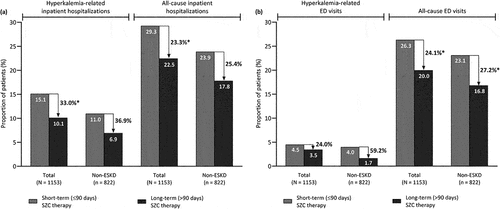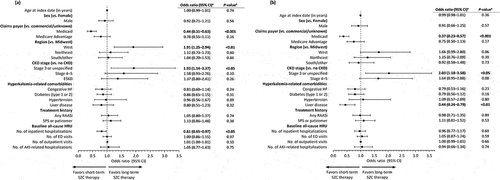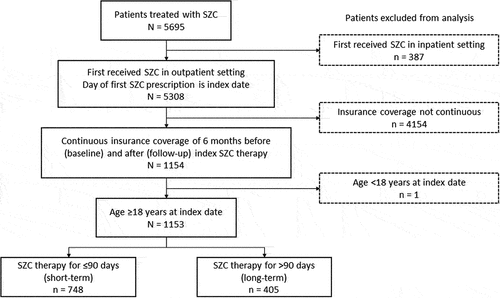Figures & data
Table 1. Baseline demographics and clinical characteristics according to duration of SZC therapy in the total patient population and in the subgroup of patients without end-stage kidney disease.
Table 2. Healthcare resource utilization during follow-up according to duration of SZC therapy in the total patient population and in the subgroup of patients without end-stage kidney disease.
Figure 2. Proportion of patients with (a) inpatient hospitalization and (b) emergency department visits during follow-up according to the duration of SZC therapy, in the total population and in the subgroup of patients without end-stage kidney disease.

Figure 3. Regression model of predictors of long-term (>90 days) versus short-term (≤90 days) SZC therapy in (a) the total patient population and (b) patients without end-stage kidney disease.

Table 3. Proportion of patients with hyperkalemia-related and all-cause healthcare resource utilization during follow-up according to duration of SZC therapy.

